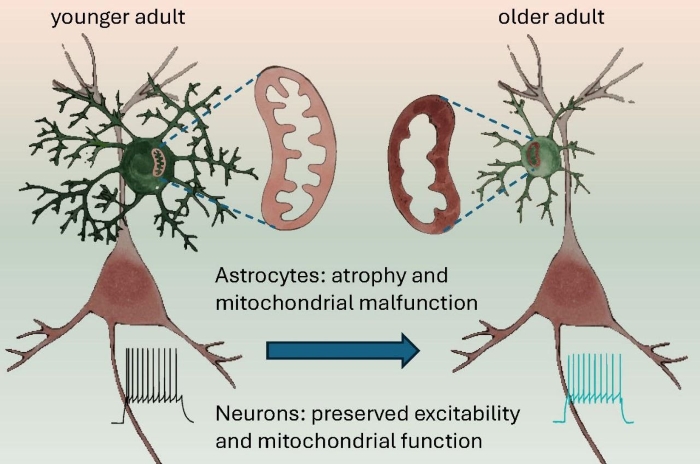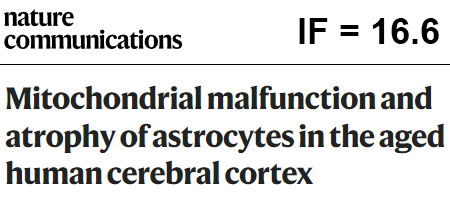Press-room / news / Science news /
Age-dependent astrocytic atrophy and mitochondrial malfunction in human neocortex
In this groundbreaking study researchers have delved into the intricate cellular changes occurring in the brains of aging adults. The study, conducted on neocortical tissue from individuals aged 22 to 72 years, provides unprecedented insights into the impact of aging on astrocytes and neurons.
The research, published in Nature communications, challenges existing paradigms by uncovering distinct responses to aging in astrocytes and neurons. Key findings include a significant decrease in the amount of reduced mitochondrial cytochromes in astrocytes, signaling potential mitochondrial dysfunction linked to aging. Notably, this phenomenon was not observed in neurons, highlighting cell-specific nuances in the aging process.
The study also reveals alterations in the protein-to-lipid ratio in astrocytes and neurons, underscoring the complexity of cellular changes associated with aging. A remarkable discovery is the morphological atrophy observed in aged astrocytes, characterized by shortened branches, decreased volume fraction of leaflets, and shrinkage of the anatomical domain. These changes were found to correlate with functional shifts, including the loss of gap junction coupling between astrocytes and increased input resistance.
Molecular insights into the observed morphological changes include the upregulation of glial fibrillary acidic protein (GFAP) and downregulation of the membrane-cytoskeleton linker ezrin associated with leaflets in aged astrocytes. Surprisingly, these changes in astrocytes did not coincide with significant alterations in neuronal excitability or spontaneous inhibitory postsynaptic signaling.
The study's unique focus on human brain aging, as opposed to rodent models, adds substantial value to the existing body of research in the field. The findings pave the way for a more nuanced understanding of the aging process, considering cell-type-specific responses within the brain active milieu.

december 25, 2023


